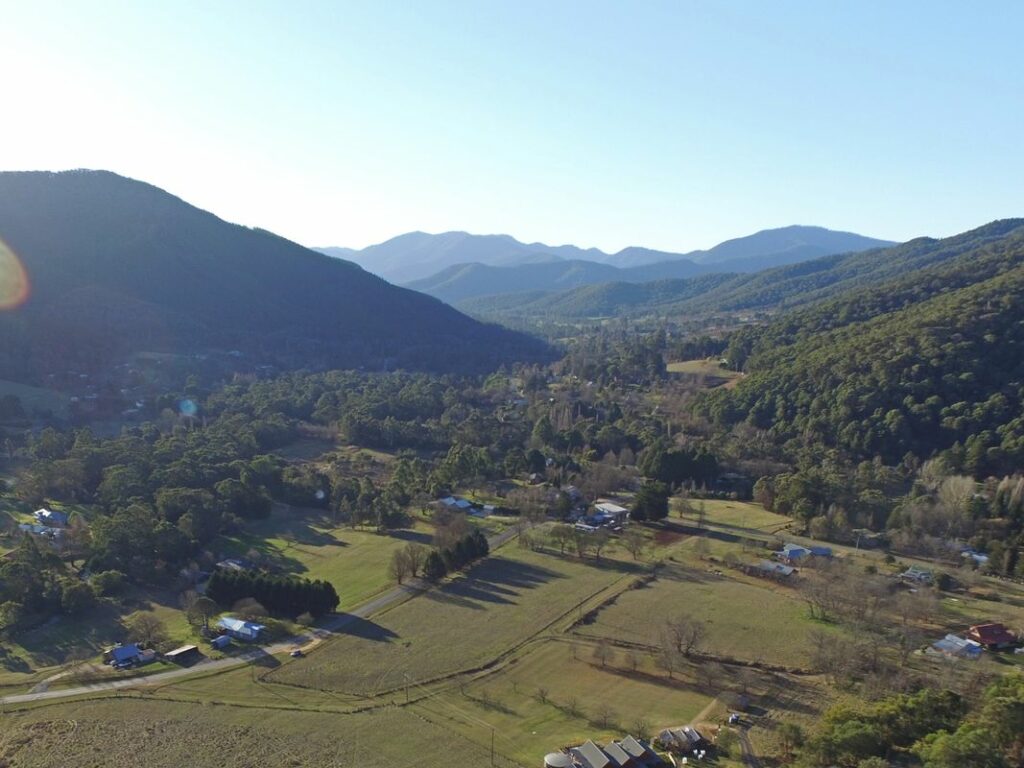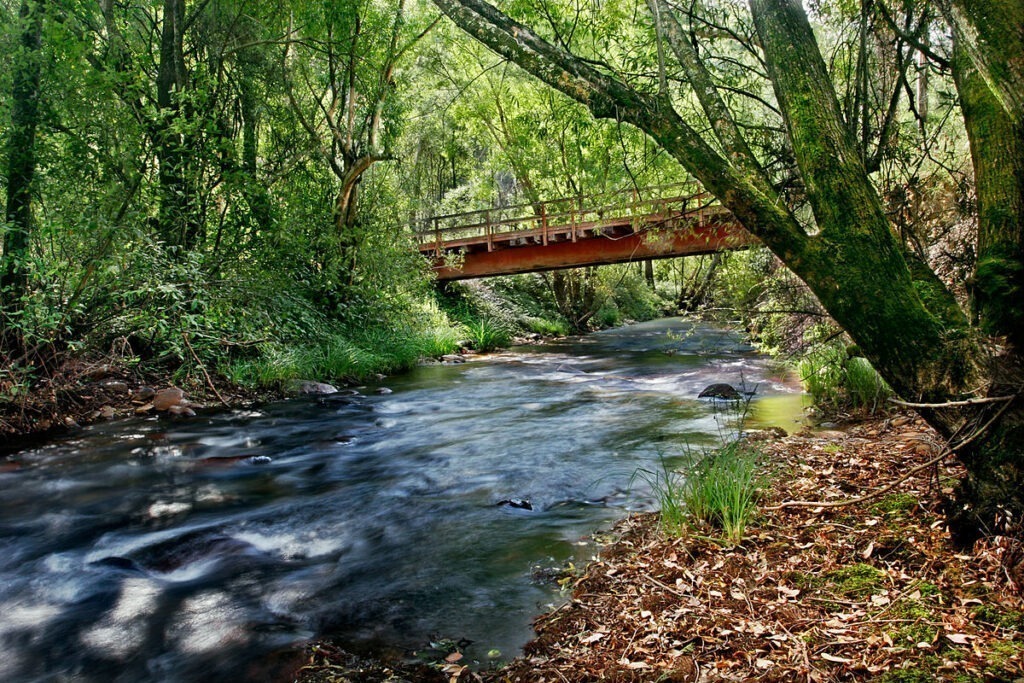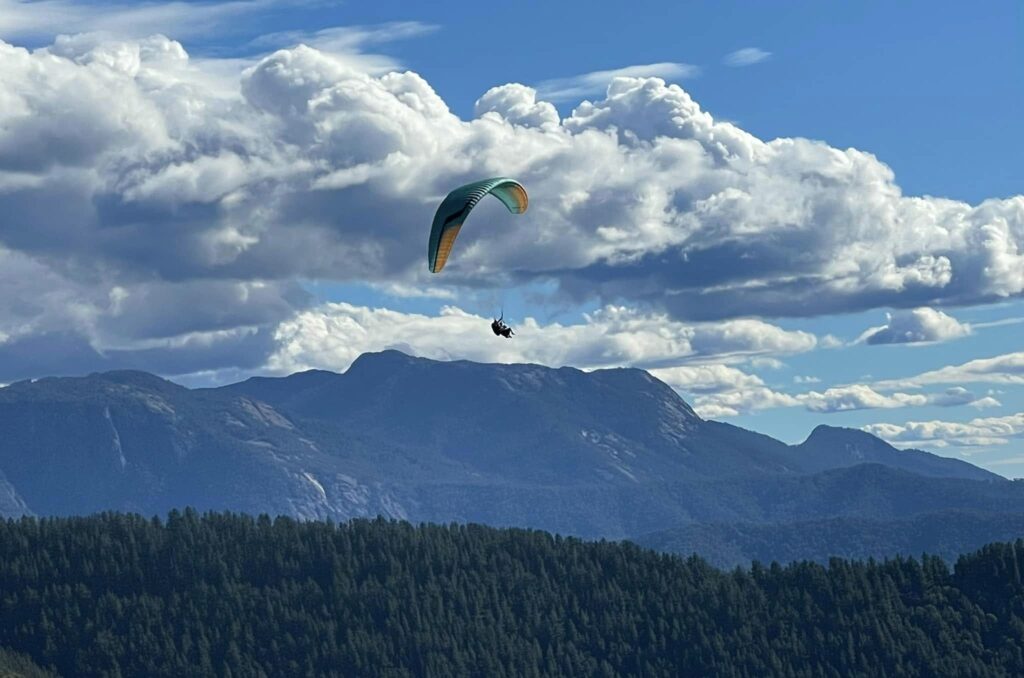

Bright, Wandiligong, Harrietville & Surrounds
Bright
In 1824, Hamilton Hume and William Hovell conducted an exploration of the area, and they gave the Ovens River its name. Initially, the town was called Morse’s Creek in honor of F. H. Morse. However, in 1861, it was renamed Bright, paying tribute to the renowned British orator and politician John Bright. The town’s Post Office was established on January 25, 1860, under the name Morse’s Creek and later renamed Bright in 1866. Bright boasts a rich cultural heritage, and many places within the town, including its street names, can be linked to current residents. The Bright Historical Society holds extensive records documenting the region’s history.
The town is in close proximity to the Victorian Alps and several alpine national parks, including Mount Buffalo National Park. Additionally, Mount Feathertop, Mount Bogong, and Mount Hotham are all situated near the town. Mount Bogong, towering at 1986 metres above sea level, holds the distinction of being the highest peak in the state of Victoria, while Mount Feathertop, at 1922 metres, is the second-highest.
Bright experiences a vibrant and lush autumn season, characterized by colorful foliage and cool days, along with chilly nights. The main industry of the town is tourism, with much focus on the autumnal colours of the European trees planted in the area. A major cultural event is the Bright Autumn Festival.
Wandiligong
Wandiligong was established in the 1850s during the Victorian gold rush and at one stage the town was home to 2,000 people. The town as a whole is now registered with the National Trust of Australia as a historic landscape and is home to buildings with historic value such as the Manchester Unity hall built in 1874. It is also home to one of the largest apple orchards in the southern hemisphere. These days, Wandi, as the locals call it, is a quiet enclave, however there are still plenty of things to do. The Diggings Walk with its Chinese Swing Bridge is a great way to discover the history of this magical little town.
Harrietville
The town’s name, Harrietville, pays homage to the first white woman to reside there. Gold miners had already arrived by May 1860 and established a Prospecting Association. Harrietville’s origins can be traced back to the Victorian Gold Rush, with the Post Office opening on July 5, 1865. Initially, alluvial gold was the primary target with most of the early miners being of Chinese descent. A large dredge known as the Tronoh Monster operated in the area, extracting alluvial gold from the Ovens River flats. The most renowned among these is the Tronoh Dredge Hole, which has become a popular location for swimming, fishing, cycling and walking.
Flora, Fauna & Adventure
The local area is abundant with a diverse array of flora and fauna. You can observe numerous wildflowers, both large and small trees, undergrowth, and ferns. You can encounter platypus, fish and yabbies, thriving in their natural habitat a short walk from urban areas. Overhead, dragonflies, harmless native bees, and a variety of bird species, including willy wagtails, kookaburras, magpies, and cockatoos, are often heard and seen in the vicinity and you can hear the enchanting calls of lyrebirds, spot wombats, and occasionally come across echidnas. The area also hosts several species of mostly small reptiles, such as lizards, and goannas can be spotted on one of the numerous nearby wooded bushwalking trails.
For those seeking adventure, hang-gliding and paragliding are popular activities, Fishing enthusiasts can cast their lines in the local rivers and dams, which are stocked with trout and Murray Cod. Mountain biking enthusiasts will find a variety of trails near the town centre, ranging from technical and fast single tracks to leisurely rides along the river.

